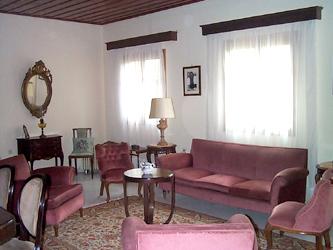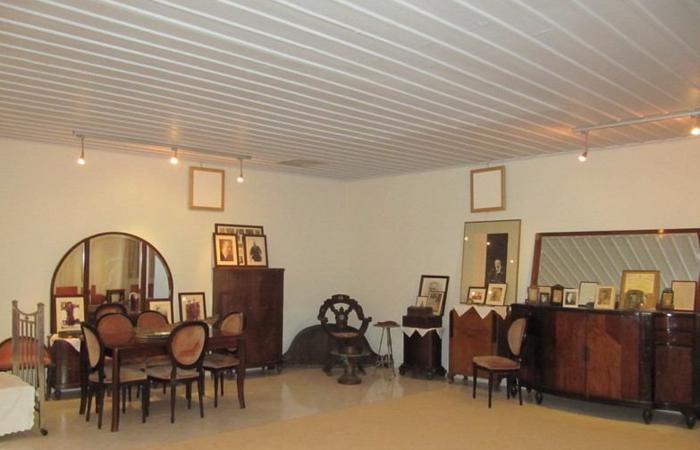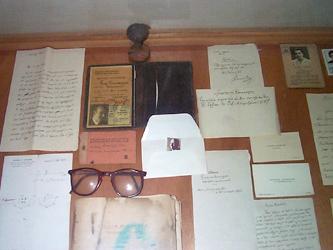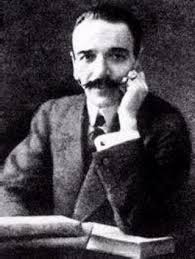
“Among the most prolific writers of this generation was Gregorios Ksenopoulos (1867-1951), from Zakynthos. […] His novels are influenced by realism and naturalism; he also recognized as teachers Balzac and Zola, and even Dickens and Daudet. It is also worth mentioning the great leap that modern Greek literature has made with it from the limited context of the ethographic narrative to the complex urban novel. And again, it is not irrelevant how much Ksenopoulos has been read by a wide audience, thus broadening the general interest in literature. ”
Linos Politis, History of Modern Greek Literature, National Bank Cultural Foundation, Athens 1998 (9th ed.), 214-215
The Brief Autobiography written by the author himself, Gregorios Ksenopoulos, as well as the video Seasons and Writers from ERT’s archive are presented in the following:
http://www.ekebi.gr/magazines/showimage.asp?file=26893&code=7168&zoom=800
Zakynthos
1st Stop: The House of Gregorios Ksenopoulos – Gregorios Ksenopoulos Museum
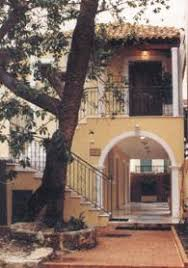 The Gregorios Ksenopoulos Museum is housed in the father’s home of the writer on Gaita Street, located in the historic district of Faneromeni in Zakynthos. In the museum the visitor can tour the spaces of the writer’s house, see close personal items of the writer, manuscripts and publications of his works, issues of the magazine “The Education of the Children”.
The Gregorios Ksenopoulos Museum is housed in the father’s home of the writer on Gaita Street, located in the historic district of Faneromeni in Zakynthos. In the museum the visitor can tour the spaces of the writer’s house, see close personal items of the writer, manuscripts and publications of his works, issues of the magazine “The Education of the Children”.
Also, exhibits include objects, furniture and utensils from the house of the Ksenopoulou family, which offer a complete picture of the writer’s everyday life. There are even several belongings of the author’s daughter Efthalia Ksenopoulou-Natsiou and her husband, Christopher Natsios, who was a famous sculptor.
2nd stop: The House of Gregorios Ksenopoulos – Ksenopouleios Library
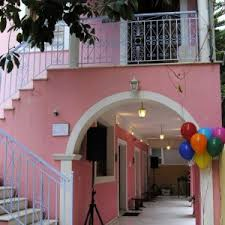 The Ksenopouleios Children’s Library is hosted also at the Gregory Ksenopoulos Museum. The library was organized with the help of teachers of the Zakynthos island and was financially supported by the Municipality of Zakynthos as a Municipal Library. The library hosts books of literature, knowledge, encyclopedias, books of Zakynthian writers, pre-school, school and teenage magazines. Visitors can also see and study the large collection of works by Gregory Ksenopoulos. In the library there is also a section with books for adults, for parents accompanying their young children in the various and interesting events / activities which take place throughout the year in the Xenopuleios library.
The Ksenopouleios Children’s Library is hosted also at the Gregory Ksenopoulos Museum. The library was organized with the help of teachers of the Zakynthos island and was financially supported by the Municipality of Zakynthos as a Municipal Library. The library hosts books of literature, knowledge, encyclopedias, books of Zakynthian writers, pre-school, school and teenage magazines. Visitors can also see and study the large collection of works by Gregory Ksenopoulos. In the library there is also a section with books for adults, for parents accompanying their young children in the various and interesting events / activities which take place throughout the year in the Xenopuleios library.
3rd Stop: Museum of D. Solomos & Eminent People of Zakynthos, San Marco square
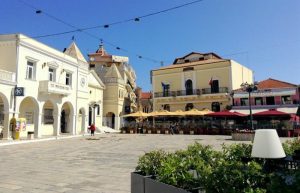
St. Mark’s Square was once the center of the culture of Zakynthos. During the Venetian occupation, writers, poets, noble and generally influential persons exchanged views in the café that existed inside it. In this square occurred historical events that shaped the political developments on the island. In 1797 the Popolars rebelled and burned the golden book of noble “Libro D`Oro”. The Popolars planted the “tree of freedom” in the center of the square, wanting to symbolize their release from the Venetians and to welcome the French Democrats.
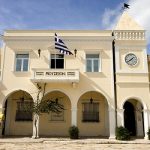 The first thought of creation for the Solomos Museum is recorded in 1903, when the manuscripts of the national poet were donated to the centenary commemoration. The Museum of D. Solomos & Eminent People of Zakynthos, however, was built after the earthquake of 1953, in the historic square of San Marco, on a site donated by the Metropolitan Church of Zakynthos, and was rebuilt with financial aid from the State, various institutions and many individuals. In these chambers are exhibited portable icons of the Cretan and Cretan-Eptinian school of the 17th-18th century portraits of prominent 17th-20th century Zakynthos bronze busts of Zakynthian hierarchs and people of the spirit, period furniture from Zakynthian mansions, musical instruments, plastic-ceramics, wood-carving, metalwork, coin molds, embroidery, knitwear, jewelery, gravures, melanographs, photographs and coats of arms. From the rich archive material stand out from the donated by Aspasia Sordina Rigler and rescued by Nick. Varvianian manuscripts by Dionysios Solomos, Nikolaos Mantzaros, Nicholas Loudzis, Antonios Matesis, Ioannis Tsakasianos, Dionysios Roma, Paul Karreris and Gregorios Ksenopoulos. The Museum houses the unique Mausoleum in Greece and numerous relics, donated by various institutions and individuals, and has been operating since August 24, 1966. Ιn 2000, it was nominated for the 2001 European Museum of the Year award.
The first thought of creation for the Solomos Museum is recorded in 1903, when the manuscripts of the national poet were donated to the centenary commemoration. The Museum of D. Solomos & Eminent People of Zakynthos, however, was built after the earthquake of 1953, in the historic square of San Marco, on a site donated by the Metropolitan Church of Zakynthos, and was rebuilt with financial aid from the State, various institutions and many individuals. In these chambers are exhibited portable icons of the Cretan and Cretan-Eptinian school of the 17th-18th century portraits of prominent 17th-20th century Zakynthos bronze busts of Zakynthian hierarchs and people of the spirit, period furniture from Zakynthian mansions, musical instruments, plastic-ceramics, wood-carving, metalwork, coin molds, embroidery, knitwear, jewelery, gravures, melanographs, photographs and coats of arms. From the rich archive material stand out from the donated by Aspasia Sordina Rigler and rescued by Nick. Varvianian manuscripts by Dionysios Solomos, Nikolaos Mantzaros, Nicholas Loudzis, Antonios Matesis, Ioannis Tsakasianos, Dionysios Roma, Paul Karreris and Gregorios Ksenopoulos. The Museum houses the unique Mausoleum in Greece and numerous relics, donated by various institutions and individuals, and has been operating since August 24, 1966. Ιn 2000, it was nominated for the 2001 European Museum of the Year award.
4th Stop: Ammos quarter – Gregorios Ksenopoulos Statue
In 1961, the marble bust of Academician Gregorios Ksenopoulos (1867-1951) was painted by the sculptor Nikolaos Sofiolakis (1914-2002) in the area of Ammos. The construction of the project is due to the initiative of the students of the Second Gymnasium of Athens and the participation of the students of the Secondary Education of Athens and Piraeus. At the base of the bust it is written: “TO PHAIDONA /THE STUDENTS OF THE SECONDARY EDUCATION / ATHENS-PIRAEUS / 1959-1960”
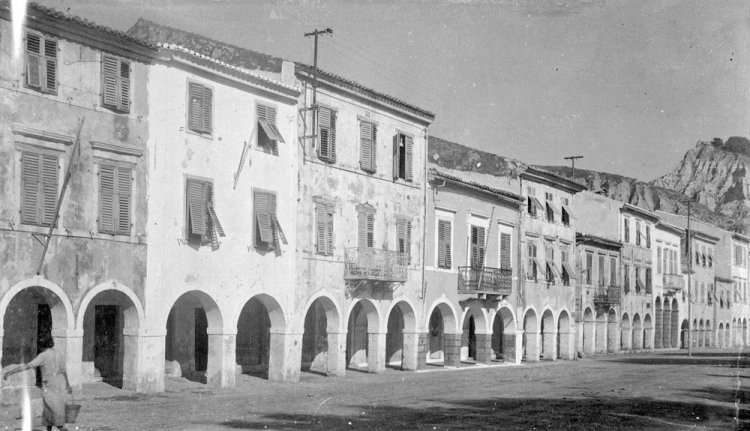
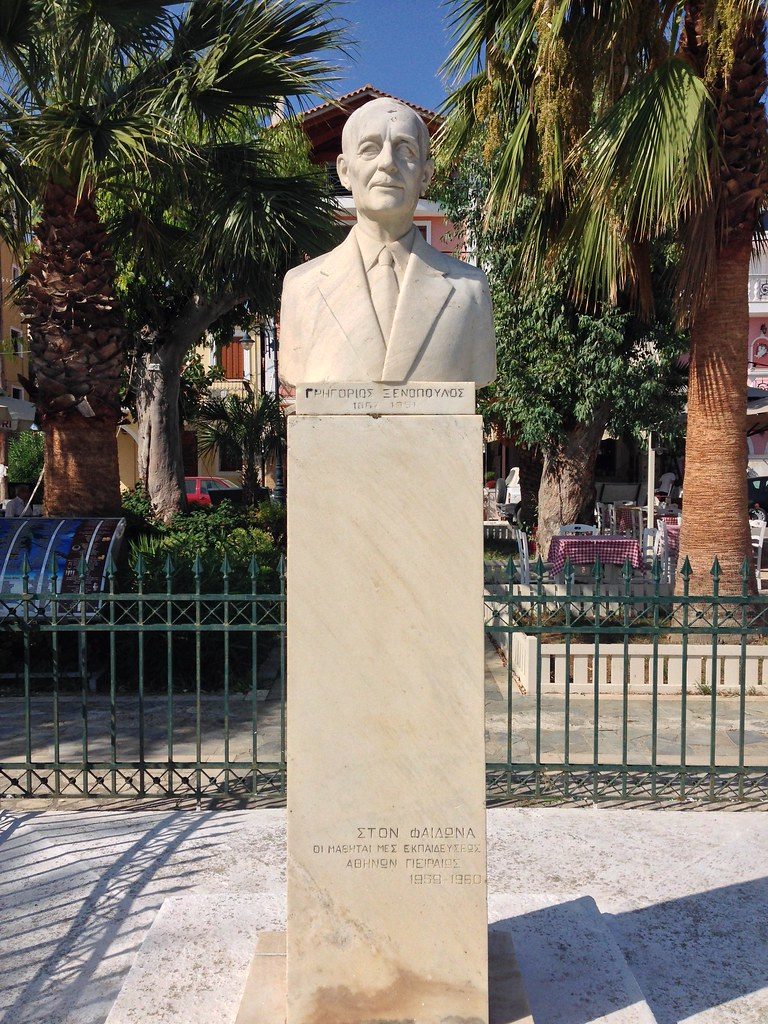
5th stop: City of Athens Cultural Center – Gregorios Ksenopoulos Statue
The City of Athens Cultural Center is the cultural center of the Municipality of Athens, in Greece. It is housed in an 1836 neoclassical building in the center of Athens. Originally the building housed the Municipal Hospital. It includes three exhibition rooms, the Fotis Kontoglou, Georgios Iakovidis and Nikolaos Gyzis halls, as well as the Antonis Tritsis amphitheatre, which holds various interdisciplinary seminars, conferences and other events. In the garden of the Cultural Center the bust of the writer Grigorios Ksenopoulos is placed.
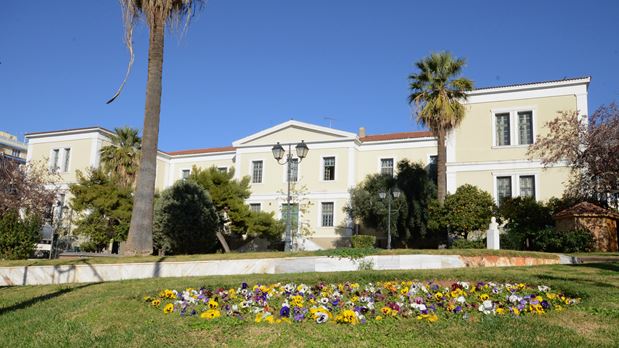
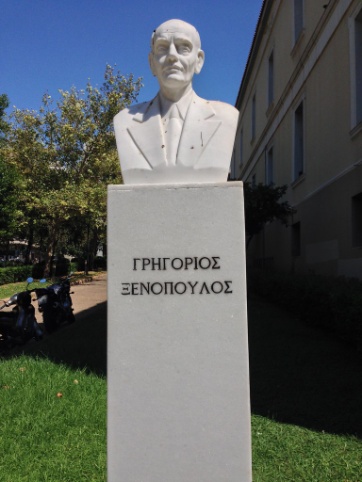
6th Stop: The house of Gregorios Ksenopoulos, 42, Euripidou Str., Athens
On the third floor of a residence at 42, Euripidou street lived Grigorios Ksenopoulos. There he had his headquarters and his magazine, “The Education of the Children”. There he had the manuscripts of his theatrical plays, which were finally lost due to the complete destruction of his house by an incendiary bomb in a battle in December 1944. Palamas, considered Ksenopoulos ‘s house “Museum of our Culture in the Future” because of Ksenopoulos’ huge and important archive (his anecdotal works, the archive of “Diaplasis”, his correspondence with Greek and foreign authors, his other texts, photographic and visuals, even documents for the theater, the Letters, the Arts in general, the personal heirlooms of the writer, etc.) .
Of particular interest is the narrative of Lambros Gouliadis, who deals with food trade, having a shop at 42 Evripidou Street. “Long time ago, Grigorios Ksenopoulos lived here. His house was exploded in the Civil War and this is the new building that was built from my father. One day, fifteen years ago, one of his daughters came here. He asked me: “Do you know what was here before?”. I replied: “Of course, it was Ksenopoulos’ house.” Then the woman cried, she said nothing else and left. She just said that she was his daughter. She wanted to see if her father’s memory still exists. ” [Source: www.lifo.gr]
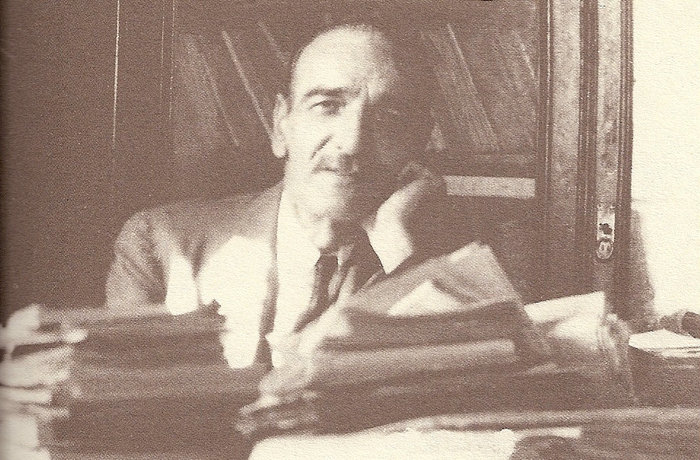
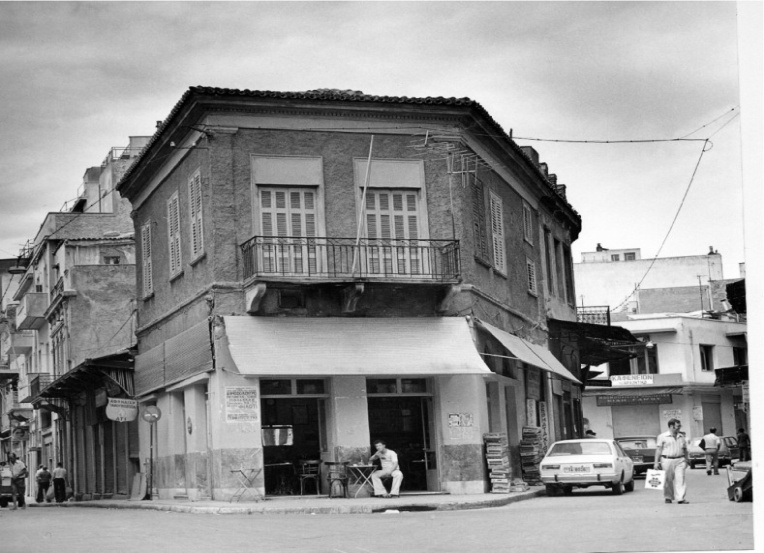
7th stop: First Cemetery of Athens – Gregorios Ksenopoulos family grave
January 14, 1951, Sunday, at 17:56, Grigorios Ksenopoulos died being among his own family, at Vassos Valassakis’s house (the husband of his first daughter, Leonis), at Eptanissos Street 38 Agios Meletios (corner), where he had settled in recent years, after the blasting of his historic house, at 38 Evripidou Street (42).
“The dead corps of Ksenopoulos was transferred to the First cemetery of Athens, where he was buried at the grave of the Ksenopoulos family. The Municipality’s Philharmonic played mourning songs, at the time of the burial, following the wish of the deceased, the mournful mourning of Beethoven’s “Heroic” composition was resolved. The coffin carried by famous writers and people of the literature, as an honour to the diseased. Sculpture of the figure of the deceased was taken by the sculptors Natsios and Lamare. The funeral was public expenditure, most of the wreaths were deposited.“
Excerpt from the funeral description as published in the newspaper “The Kathimerini” on Tuesday, January 16, 1951
